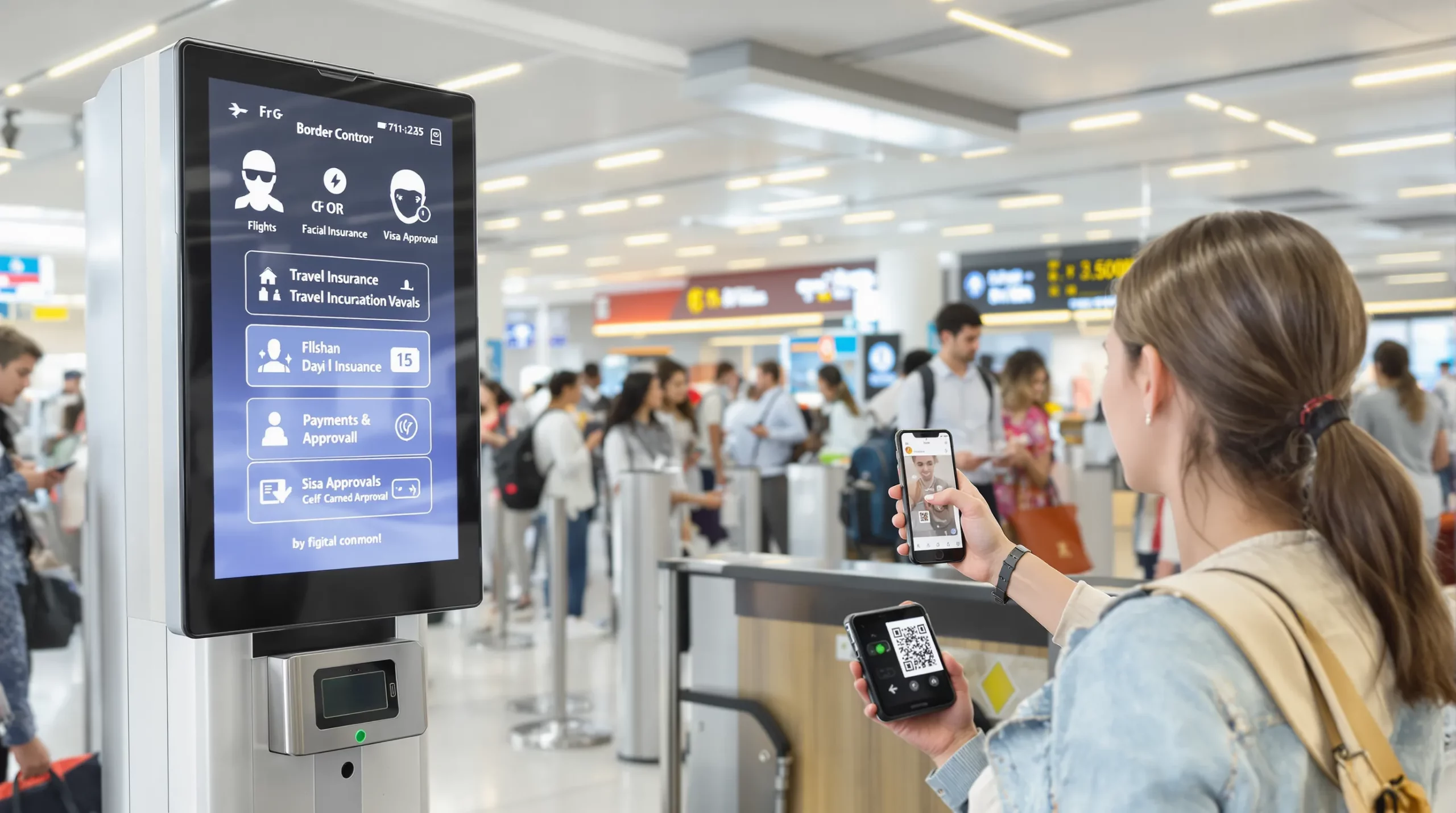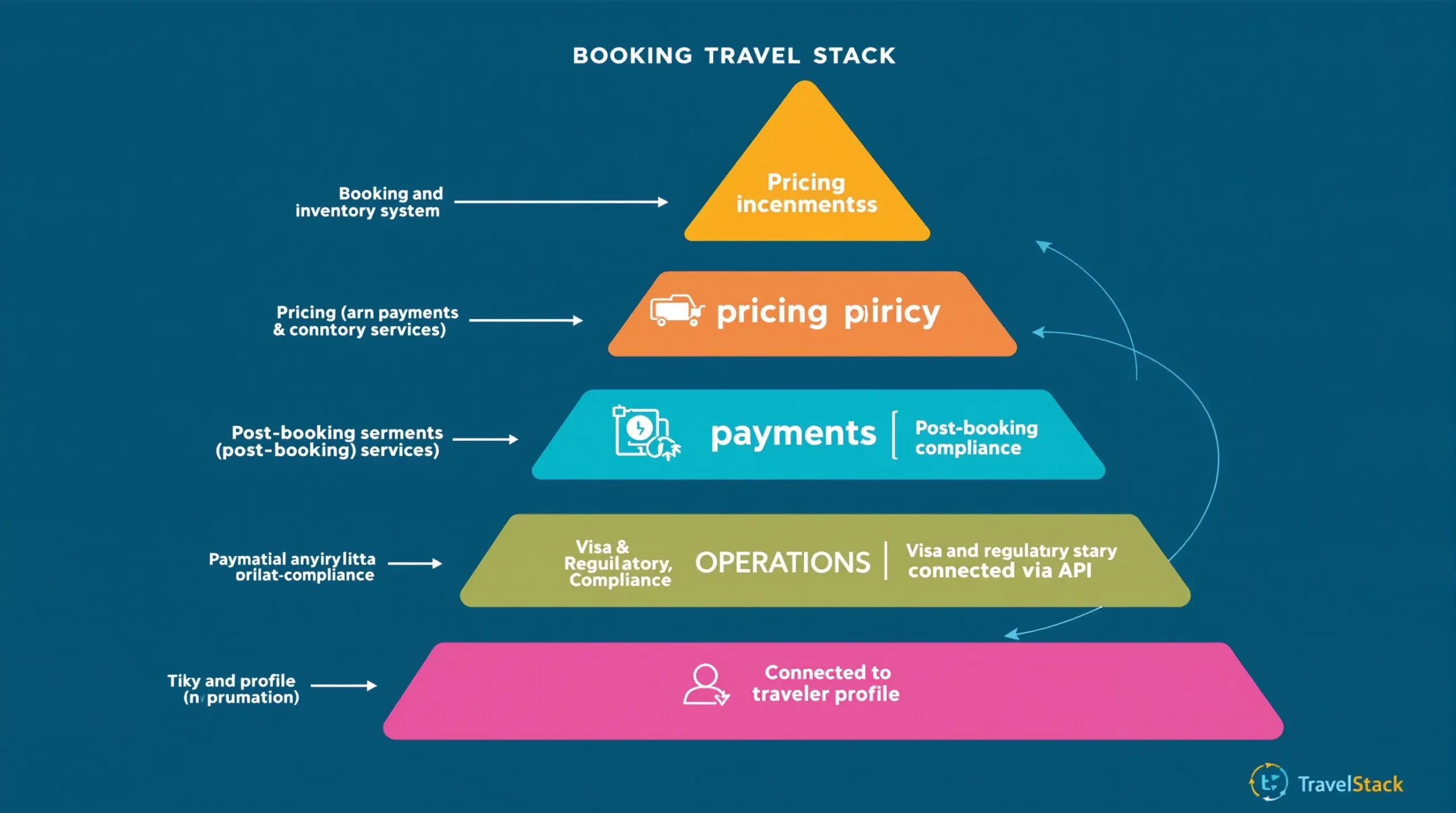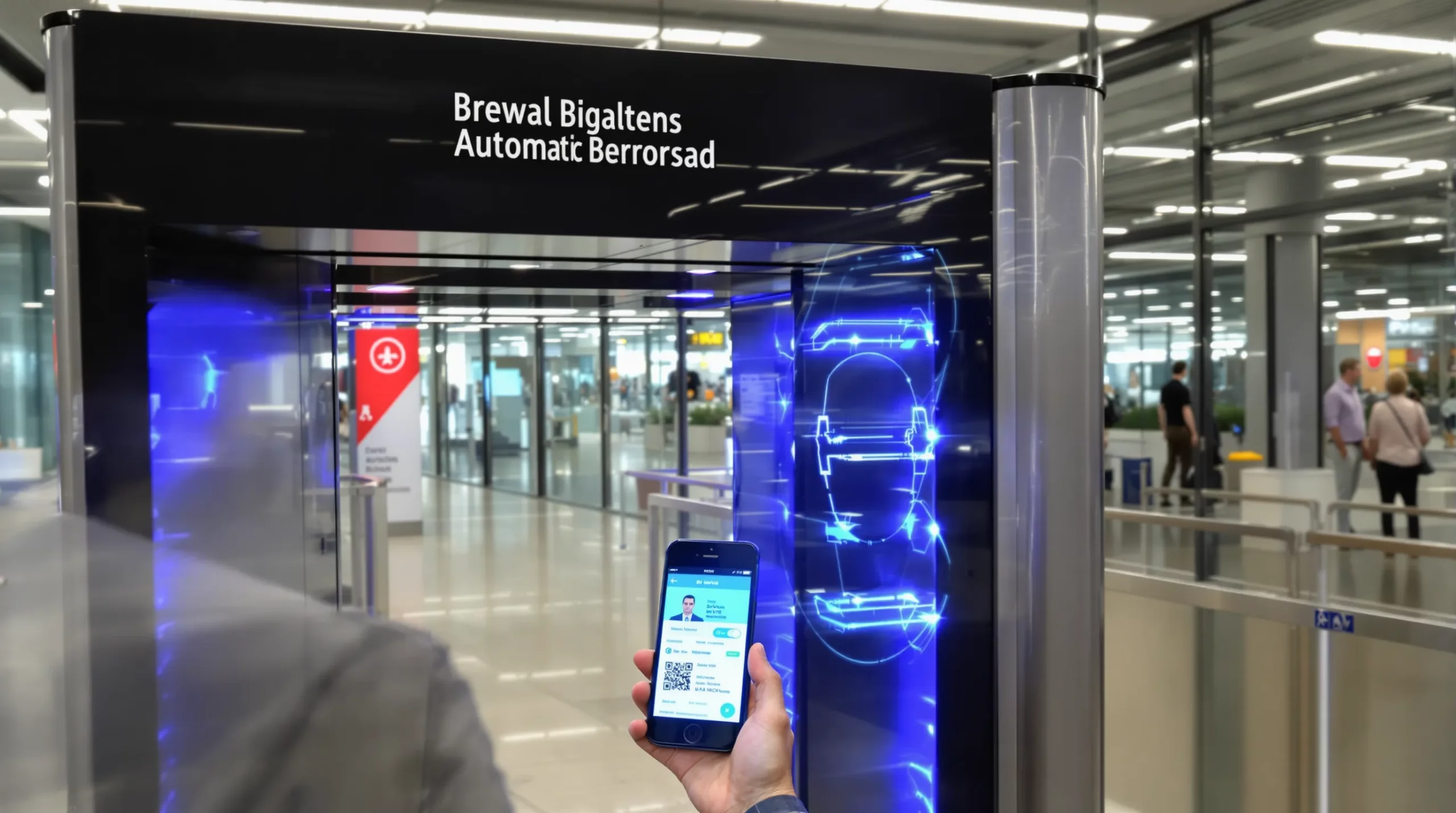Travel Tech Stack 2025: Where a Visa Management Platform Fits In

Welcome to the plug-and-play travel era
A decade ago, an online travel agency (OTA) could get away with three core systems: a booking engine, a payments gateway, and customer support software. In 2025 that minimal stack looks quaint. Travelers expect hyper-personalized offers, frictionless border crossings, and one-click upsells—from flight carbon offsets to digital SIM cards. Meeting those expectations without burying engineers in custom code demands a modular, API-first tech stack.
In this article we break down the modern travel tech stack and zoom in on one capability that still flies under most product roadmaps: a visa management platform. We’ll see how automating border-crossing requirements unlocks both superior customer experience and a new ancillary revenue line, then map out where—architecturally and commercially—it fits alongside payments, insurance, and loyalty modules.
Key layers of a 2025 travel tech stack
- Booking & inventory distribution
- GDS connectivity (Amadeus, Sabre)
- NDC aggregators for airline offers
- Pricing & revenue management
- Dynamic pricing engines
- Ancillary merchandising tools
- Payments & fraud prevention
- Global payment orchestration
- Alternative payment methods and real-time fraud scoring
- Post-booking services
- Travel insurance APIs
- Seat selection and bag add-ons
- Loyalty accrual programs
- Trip operations & disruption management
- Flight status and re-accommodation automation
- Customer communications platforms
- Regulatory & document compliance
- Visa and ETA eligibility checks
- eVisa application workflows
- Document storage and retrieval
- Data & personalization
- Customer Data Platforms (CDPs)
- Machine-learning recommendation engines
The first five layers are now table stakes. The sixth—regulatory and document compliance—is where many brands still rely on static content pages or manual support teams. Yet border requirements change weekly and governments are rapidly switching to electronic travel authorizations (ETIAS in Europe, K-ETA in Korea, etc.). Failing to automate this layer is fast becoming a conversion killer.

Why a visa management platform matters in 2025
- Border rules are multiplying: By the end of 2025, more than 70 countries will operate mandatory eVisa or ETA schemes according to IATA Timatic data.
- False negatives cost bookings: A Skift Research survey found that 16% of travelers abandoned a cart in 2024 after discovering complex entry requirements late in the flow.
- Manual checks don’t scale: Even a small OTA can field thousands of “Do I need a visa?” queries per month. Average handling time: 12 minutes. Automation saves ~US$4–6 per passenger journey.
- Ancillary revenue is up for grabs: Average commission on an eVisa processed via a partner platform sits between US$8 and US$20—comparable to seat selection fees.
For a deeper dive into the business upside, see our article “8 reasons to streamline travel and elevate customer experience with a Visa Solution.”
How visa management integrates with the rest of the stack
Travel brands typically choose one of three integration patterns, depending on their development resources and control requirements:
-
API integration
- Best for OTAs, airlines, and super-apps with in-house engineers.
- Calls real-time visa eligibility endpoints during search and booking.
- Launches a guided white-label application inside the native UI.
- Example API flow: search > eligibility check > conditional offer > application submission > webhook status updates.
- See “How eVisa APIs work: Step by Step” for technical details.
-
No-code widget
- Drag-and-drop JavaScript snippet surfaces visa requirements and purchase option.
- Ideal for mid-size tour operators rebuilding their sites on headless CMS platforms.
-
White-label app or portal
- Stand-alone mobile or web experience.
- Popular among travel insurers and loyalty programs that want to offer visa assistance without touching their core codebase.
Whichever route you pick, the platform should feed status data back to the order management system so that CX agents and travelers see a unified itinerary—including visa approval or pending alerts—inside their trip timeline.
Building vs. buying: decision checklist
| Question | Build internally | Use SimpleVisa platform |
|---|---|---|
| Coverage of 200+ jurisdictions | Requires continuous regulatory monitoring | Live database updated daily |
| Government connections | Lengthy accreditation per country | Pre-approved channels & local partners |
| Time-to-market | 9–18 months | 4–6 weeks (API) or 1 day (widget) |
| Up-front cost | High (legal, compliance, dev) | Low (usage-based) |
| Ancillary revenue model | Must negotiate each fee | Revenue share included |
Case snapshot: airline super-app rolls out visa automation in 6 weeks
A Southeast Asian flag carrier wanted to drive post-booking revenue via its new super-app. Engineering resources were limited due to a parallel NDC upgrade. The team opted for SimpleVisa’s low-code widget:
- Added eligibility checks to the confirmation page and mobile push notifications.
- 34% of passengers clicked the visa prompt; 21% completed an application.
- Ancillary revenue per passenger segment increased by US$6.40.
- Support tickets on visa questions dropped by 48% within two months.
The 2025 roadmap: digital identity and smart borders
Looking ahead, visa management platforms will plug into broader digital identity ecosystems:
- ETIAS & EU Digital Travel Credentials: From mid-2025, ETIAS approvals can be stored in the upcoming EU Digital Identity Wallet. Platforms that support QR-based retrieval will shorten airport dwell time.
- One-click reauthorization: Australia and Canada are piloting multi-trip ETA renewals via biometric re-authentication. Expect APIs to expose “tap to renew” flows.
- Smart border corridors: Airports like Singapore Changi are integrating eVisa status into automated immigration gates. Carriers that pass structured visa data in their Advance Passenger Information System (APIS) messages will reduce fines for non-compliant passengers.
Choosing a future-proof visa platform now means you won’t rewrite code each time a government launches a new digital identity scheme.

Frequently Asked Questions (FAQ)
Can I surface visa eligibility during flight search without slowing response times?
Yes. SimpleVisa’s eligibility endpoint responds in under 150 ms. You can cache static rules and only call the live API for complex nationalities.
What happens if a government site goes offline?
Our platform retries submissions automatically and notifies the traveler. If downtime exceeds SLA thresholds, we issue refunds and route applications to consulate desks where possible.
Do travelers need to leave my brand environment?
No. The white-label flow inherits your CSS and domain. For full control, the headless API lets you build bespoke UI components.
Is storing passport data GDPR-compliant?
SimpleVisa encrypts PII at rest with AES-256 and purges documents after statutory retention periods. We are ISO 27001-certified and support EU and US data residency.
How much ancillary revenue can we expect?
Across 400+ partner sites, average take-rate ranges from US$5–18 per traveler, depending on route mix and attach rate. Our team can model scenarios based on your traffic.
Ready to fill the compliance gap in your tech stack?
Don’t let visa confusion derail conversions or burn support hours. Book a 20-minute demo to see how SimpleVisa slots into your existing architecture and starts generating revenue from week one.
Schedule a demo